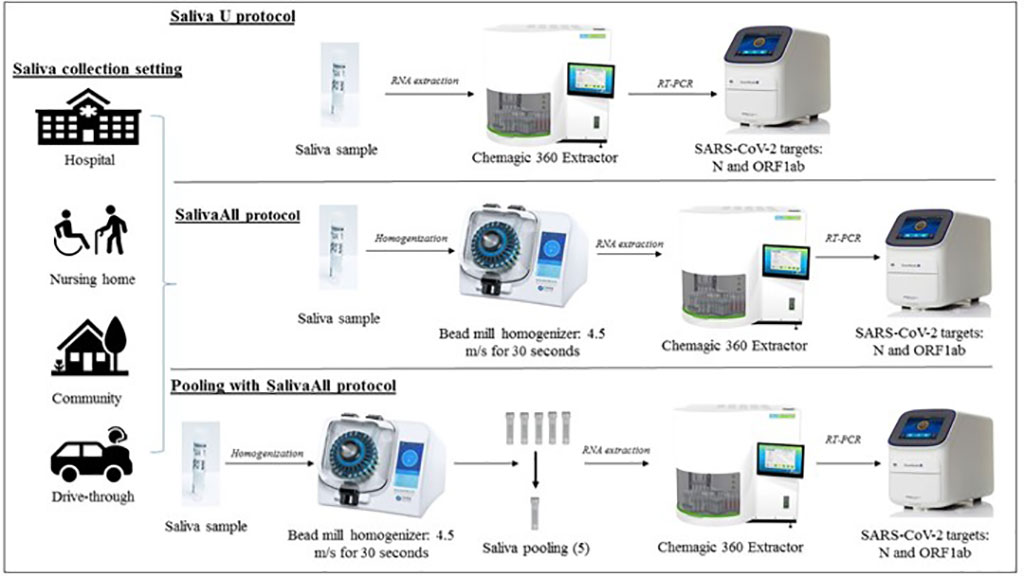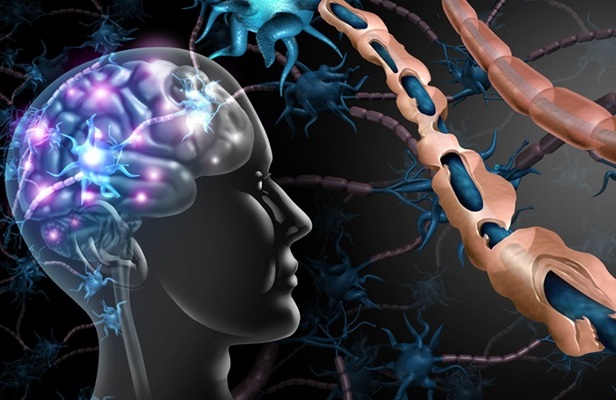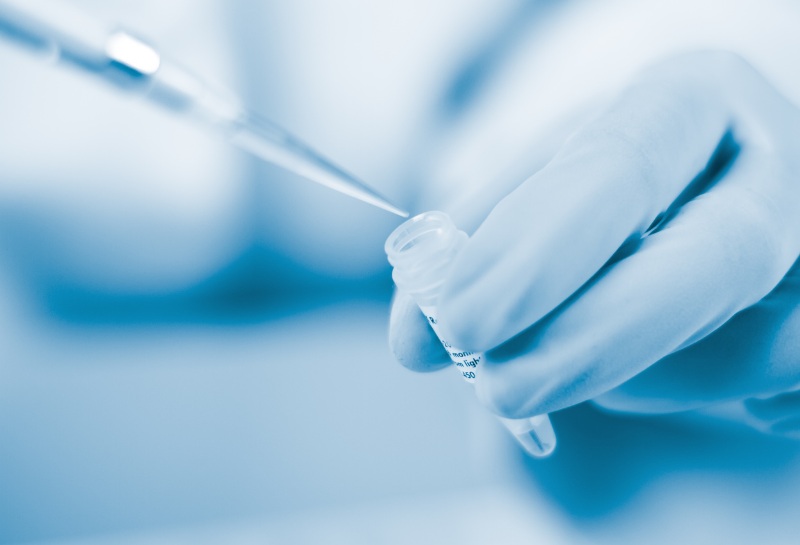Innovative Protocol That Processes Saliva Samples with Bead Mill Homogenizer Before RT-PCR Testing Improves COVID-19 Detection Rate
|
By LabMedica International staff writers Posted on 14 Jun 2021 |

Image: Schematic overview of sample processing and severe acute respiratory syndrome coronavirus 2 (SARS-CoV-2) assay workflow, depicting main steps (Photo courtesy of Nikhil S. Sahajpal)
The addition of a simple processing step to saliva samples before testing may improve COVID-19 detection rate, eliminate the challenges of nasopharyngeal testing, and facilitate mass surveillance, according to researchers.
A team of researchers from Augusta University (Augusta, GA, USA) has found that an innovative protocol that processes saliva samples with a bead mill homogenizer before real-time PCR (RT-PCR) testing results in higher sensitivity compared to NPS samples. The collection of nasopharyngeal swab (NPS) samples for COVID-19 diagnostic testing poses challenges including exposure risk to healthcare workers and supply chain constraints. Saliva samples are easier to collect but can be mixed with mucus or blood, and some studies have found they produce less accurate results.
The study included samples from a hospital and nursing home as well as from a drive-through testing site. In the first phase (protocol U), 240 matched NPS and saliva sample pairs were tested prospectively for SARS-CoV-2 RNA by RT-PCR. In the second phase of the study (SalivaAll), 189 matched pairs, including 85 that had been previously evaluated with protocol U, were processed in an Omni bead mill homogenizer before RT-PCR testing. An additional study was conducted with samples with both protocol U and SalivaAll to determine if bead homogenization would affect the clinical sensitivity in NPS samples. Finally, a five-sample pooling strategy was evaluated. Twenty positive pools containing one positive and four negative samples were processed with the Omni bead homogenizer before pooling for SARS-CoV-2 RT-PCR testing and compared to controls.
In Phase I, 28.3% of samples tested positive for SARS-CoV-2 from either NPS, saliva, or both. The detection rate was lower in saliva compared to NPS (50.0% vs. 89.7%). In Phase II, 50.2% of samples tested positive for SARS-CoV-2 from either saliva, NPS, or both. The detection rate was higher in saliva compared to NPS samples (97.8% vs. 78.9%). Of the 85 saliva samples tested with both protocols, the detection rate was 100% for samples tested with SalivaAll and 36.7% with protocol U.
According to the researchers, the underlying issues associated with lower sensitivity of saliva to RT-PCR testing could be attributed to the gel-like consistency of saliva samples, which made it difficult to accurately pipet samples into extraction plates for nucleic acid extraction. Adding the homogenization step rendered the saliva samples to uniform viscosity and consistency, making it easier to pipet for the downstream assay. The researchers also successfully validated saliva samples in the five-sample pooling strategy. The pooled testing results demonstrated a positive agreement of 95%, and the negative agreement was found to be 100%. Pooled testing will be critical for SARS-CoV-2 mass surveillance as schools reopen, travel and tourism resume, and people return to offices.
“Saliva as a sample type for COVID-19 testing was a game changer in our fight against the pandemic. It helped us with increased compliance from the population for testing along with decreased exposure risk to the healthcare workers during the collection process,” said lead investigator Ravindra Kolhe, MD, PhD, Department of Pathology, Medical College of Georgia, Augusta University. “Monitoring SARS-CoV-2 will remain a public health need. The use of a non-invasive collection method and easily accessible sample such as saliva will enhance screening and surveillance activities and bypass the need for sterile swabs, expensive transport media, and exposure risk, and even the need for skilled healthcare workers for sample collection.”
Related Links:
Augusta University
A team of researchers from Augusta University (Augusta, GA, USA) has found that an innovative protocol that processes saliva samples with a bead mill homogenizer before real-time PCR (RT-PCR) testing results in higher sensitivity compared to NPS samples. The collection of nasopharyngeal swab (NPS) samples for COVID-19 diagnostic testing poses challenges including exposure risk to healthcare workers and supply chain constraints. Saliva samples are easier to collect but can be mixed with mucus or blood, and some studies have found they produce less accurate results.
The study included samples from a hospital and nursing home as well as from a drive-through testing site. In the first phase (protocol U), 240 matched NPS and saliva sample pairs were tested prospectively for SARS-CoV-2 RNA by RT-PCR. In the second phase of the study (SalivaAll), 189 matched pairs, including 85 that had been previously evaluated with protocol U, were processed in an Omni bead mill homogenizer before RT-PCR testing. An additional study was conducted with samples with both protocol U and SalivaAll to determine if bead homogenization would affect the clinical sensitivity in NPS samples. Finally, a five-sample pooling strategy was evaluated. Twenty positive pools containing one positive and four negative samples were processed with the Omni bead homogenizer before pooling for SARS-CoV-2 RT-PCR testing and compared to controls.
In Phase I, 28.3% of samples tested positive for SARS-CoV-2 from either NPS, saliva, or both. The detection rate was lower in saliva compared to NPS (50.0% vs. 89.7%). In Phase II, 50.2% of samples tested positive for SARS-CoV-2 from either saliva, NPS, or both. The detection rate was higher in saliva compared to NPS samples (97.8% vs. 78.9%). Of the 85 saliva samples tested with both protocols, the detection rate was 100% for samples tested with SalivaAll and 36.7% with protocol U.
According to the researchers, the underlying issues associated with lower sensitivity of saliva to RT-PCR testing could be attributed to the gel-like consistency of saliva samples, which made it difficult to accurately pipet samples into extraction plates for nucleic acid extraction. Adding the homogenization step rendered the saliva samples to uniform viscosity and consistency, making it easier to pipet for the downstream assay. The researchers also successfully validated saliva samples in the five-sample pooling strategy. The pooled testing results demonstrated a positive agreement of 95%, and the negative agreement was found to be 100%. Pooled testing will be critical for SARS-CoV-2 mass surveillance as schools reopen, travel and tourism resume, and people return to offices.
“Saliva as a sample type for COVID-19 testing was a game changer in our fight against the pandemic. It helped us with increased compliance from the population for testing along with decreased exposure risk to the healthcare workers during the collection process,” said lead investigator Ravindra Kolhe, MD, PhD, Department of Pathology, Medical College of Georgia, Augusta University. “Monitoring SARS-CoV-2 will remain a public health need. The use of a non-invasive collection method and easily accessible sample such as saliva will enhance screening and surveillance activities and bypass the need for sterile swabs, expensive transport media, and exposure risk, and even the need for skilled healthcare workers for sample collection.”
Related Links:
Augusta University
Latest COVID-19 News
- New Immunosensor Paves Way to Rapid POC Testing for COVID-19 and Emerging Infectious Diseases
- Long COVID Etiologies Found in Acute Infection Blood Samples
- Novel Device Detects COVID-19 Antibodies in Five Minutes
- CRISPR-Powered COVID-19 Test Detects SARS-CoV-2 in 30 Minutes Using Gene Scissors
- Gut Microbiome Dysbiosis Linked to COVID-19
- Novel SARS CoV-2 Rapid Antigen Test Validated for Diagnostic Accuracy
- New COVID + Flu + R.S.V. Test to Help Prepare for `Tripledemic`
- AI Takes Guesswork Out Of Lateral Flow Testing
- Fastest Ever SARS-CoV-2 Antigen Test Designed for Non-Invasive COVID-19 Testing in Any Setting
- Rapid Antigen Tests Detect Omicron, Delta SARS-CoV-2 Variants
- Health Care Professionals Showed Increased Interest in POC Technologies During Pandemic, Finds Study
- Set Up Reserve Lab Capacity Now for Faster Response to Next Pandemic, Say Researchers
- Blood Test Performed During Initial Infection Predicts Long COVID Risk
- Low-Cost COVID-19 Testing Platform Combines Sensitivity of PCR and Speed of Antigen Tests
- Finger-Prick Blood Test Identifies Immunity to COVID-19
- Quick Test Kit Determines Immunity Against COVID-19 and Its Variants
Channels
Clinical Chemistry
view channel
Blood Test Could Predict and Identify Early Relapses in Myeloma Patients
Multiple myeloma is an incurable cancer of the bone marrow, and while many patients now live for more than a decade after diagnosis, a significant proportion relapse much earlier with poor outcomes.... Read more
Compact Raman Imaging System Detects Subtle Tumor Signals
Accurate cancer diagnosis often depends on labor-intensive tissue staining and expert pathological review, which can delay results and limit access to rapid screening. These conventional methods also make... Read moreMolecular Diagnostics
view channel
Blood Test Combined with MRI Brain Scans Reveals Two Distinct Multiple Sclerosis Types
Multiple sclerosis (MS) affects more than 2.8 million people worldwide, yet predicting how the disease will progress in individual patients remains difficult. Current MS classifications are based on clinical... Read more
Ultra-Sensitive Blood Biomarkers Enable Population-Scale Insights into Alzheimer’s Pathology
Accurately estimating how many people carry Alzheimer’s disease pathology has long been a challenge, as traditional methods rely on small, clinic-based samples rather than the general population.... Read more
Blood Test Could Predict Death Risk in World’s Most Common Inherited Heart Disease
Hypertrophic cardiomyopathy (HCM) is the world’s most common inherited heart condition and affects millions of people globally. While some patients live with few or no symptoms, others develop heart failure,... Read moreHematology
view channel
MRD Tests Could Predict Survival in Leukemia Patients
Acute myeloid leukemia is an aggressive blood cancer that disrupts normal blood cell production and often relapses even after intensive treatment. Clinicians currently lack early, reliable markers to predict... Read more
Platelet Activity Blood Test in Middle Age Could Identify Early Alzheimer’s Risk
Early detection of Alzheimer’s disease remains one of the biggest unmet needs in neurology, particularly because the biological changes underlying the disorder begin decades before memory symptoms appear.... Read more
Microvesicles Measurement Could Detect Vascular Injury in Sickle Cell Disease Patients
Assessing disease severity in sickle cell disease (SCD) remains challenging, especially when trying to predict hemolysis, vascular injury, and risk of complications such as vaso-occlusive crises.... Read more
ADLM’s New Coagulation Testing Guidance to Improve Care for Patients on Blood Thinners
Direct oral anticoagulants (DOACs) are one of the most common types of blood thinners. Patients take them to prevent a host of complications that could arise from blood clotting, including stroke, deep... Read moreImmunology
view channel
Ultrasensitive Liquid Biopsy Demonstrates Efficacy in Predicting Immunotherapy Response
Immunotherapy has transformed cancer treatment, but only a small proportion of patients experience lasting benefit, with response rates often remaining between 10% and 20%. Clinicians currently lack reliable... Read more
Blood Test Could Identify Colon Cancer Patients to Benefit from NSAIDs
Colon cancer remains a major cause of cancer-related illness, with many patients facing relapse even after surgery and chemotherapy. Up to 40% of people with stage III disease experience recurrence, highlighting... Read moreMicrobiology
view channel
New UTI Diagnosis Method Delivers Antibiotic Resistance Results 24 Hours Earlier
Urinary tract infections affect around 152 million people every year, making them one of the most common bacterial infections worldwide. In routine medical practice, diagnosis often relies on rapid urine... Read more
Breakthroughs in Microbial Analysis to Enhance Disease Prediction
Microorganisms shape human health, ecosystems, and the planet’s climate, yet identifying them and understanding how they are related remains a major scientific challenge. Even with modern DNA sequencing,... Read morePathology
view channel
Genetics and AI Improve Diagnosis of Aortic Stenosis
Aortic stenosis is a progressive narrowing of the aortic valve that restricts blood flow from the heart and can be fatal if left untreated. There are currently no medical therapies that can prevent or... Read more
AI Tool Simultaneously Identifies Genetic Mutations and Disease Type
Interpreting genetic test results remains a major challenge in modern medicine, particularly for rare and complex diseases. While existing tools can indicate whether a genetic mutation is harmful, they... Read more
Rapid Low-Cost Tests Can Prevent Child Deaths from Contaminated Medicinal Syrups
Medicinal syrups contaminated with toxic chemicals have caused the deaths of hundreds of children worldwide, exposing a critical gap in how these products are tested before reaching patients.... Read more
Tumor Signals in Saliva and Blood Enable Non-Invasive Monitoring of Head and Neck Cancer
Head and neck cancers are among the most aggressive malignancies worldwide, with nearly 900,000 new cases diagnosed each year. Monitoring these cancers for recurrence or relapse typically relies on tissue... Read moreTechnology
view channel
Pioneering Blood Test Detects Lung Cancer Using Infrared Imaging
Detecting cancer early and tracking how it responds to treatment remains a major challenge, particularly when cancer cells are present in extremely low numbers in the bloodstream. Circulating tumor cells... Read more
AI Predicts Colorectal Cancer Survival Using Clinical and Molecular Features
Colorectal cancer is one of the most common and deadly cancers worldwide, and accurately predicting patient survival remains a major clinical challenge. Traditional prognostic tools often rely on either... Read moreIndustry
view channel
BD and Penn Institute Collaborate to Advance Immunotherapy through Flow Cytometry
BD (Becton, Dickinson and Company, Franklin Lakes, NJ, USA) has entered into a strategic collaboration with the Institute for Immunology and Immune Health (I3H, Philadelphia, PA, USA) at the University... Read more





















